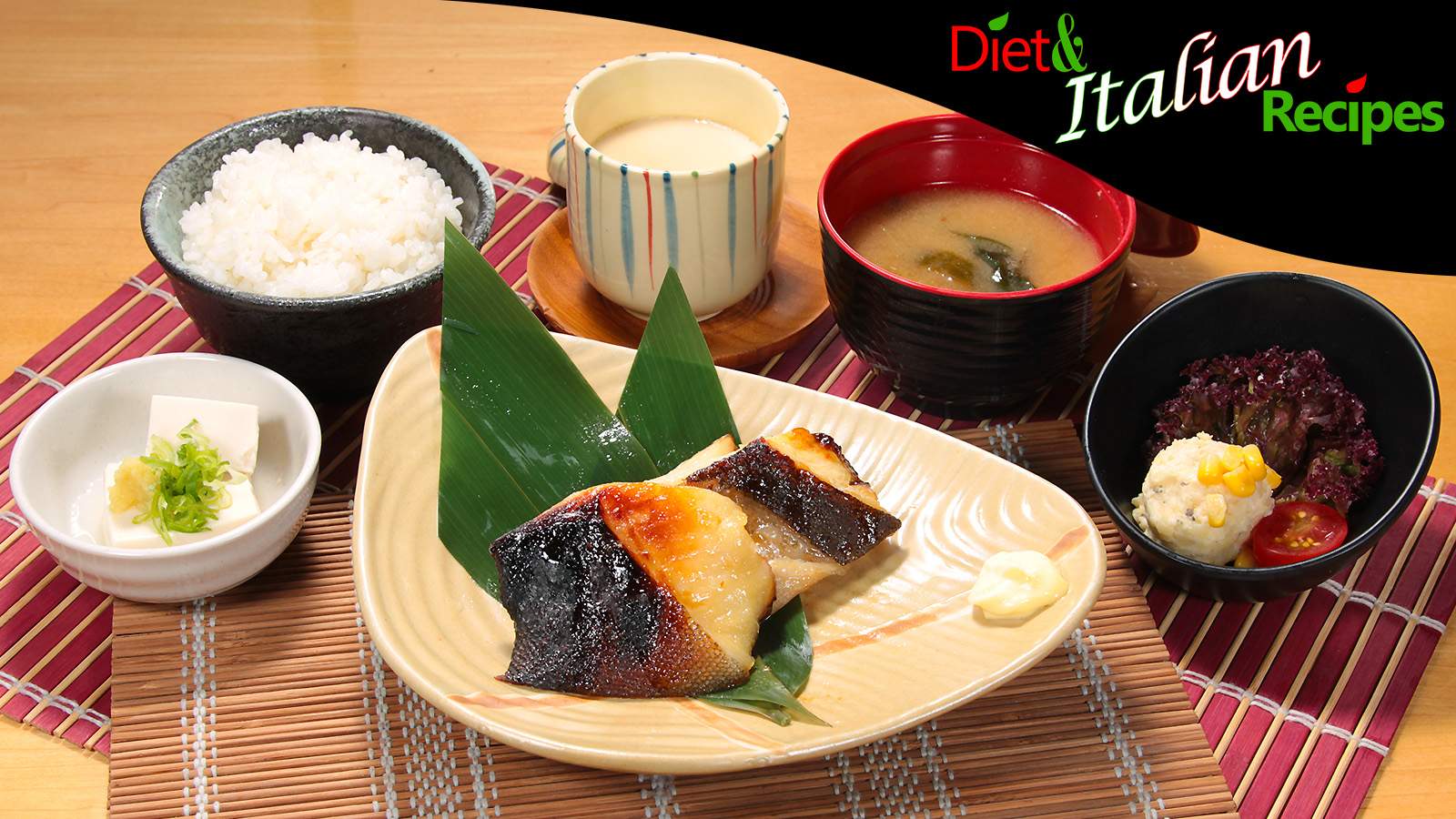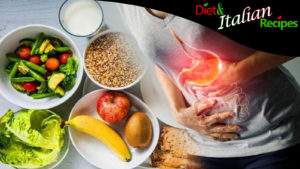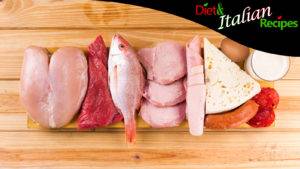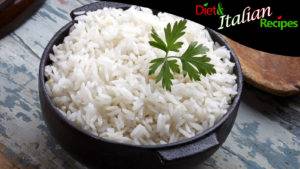The Japanese diet is considered the food of longevity, with particular regard to the Okinawa diet, but today we see its slimming effects. Many try to lose weight and failing wonder if the Japanese diet for weight loss is the answer to their needs. One thing is certain, the Japanese diet is naturally dietary and balanced, as well as low-calorie, but if you don’t like sushi, rice, fish or vegetables, it’s not the diet for you because this diet is full of them every day. So let’s see what the Japanese eat, we bring you some examples of breakfast, lunch and dinner that will make you understand immediately why the Japanese are so thin without difficulty. The Japanese diet would also make you lose about 4 kg in 7 days, obviously it depends on many factors but trying it for a week is worth it, naturally on the advice of your doctor.

Japanese Diet to lose 4 kg in 7 days
A week (7 days) is enough time to lose 4 kg in a healthy and balanced way with the Japanese diet, which allows for significant weight loss without too many sacrifices. So, what do the Japanese eat to stay slim? Their diet consists of very genuine and balanced meals, not too filling, with three main meals a day: breakfast, lunch, and dinner. All meals are cooked, and there are no pre-packaged snacks, crackers, or sweets like we are used to in the West.
To lose 4 kg in 7 days with the Japanese diet, we should focus on what they eat and try to imitate it at home in America. That’s why we did some research and discovered some dishes that should be on a Japanese table (you can find them in the example menu at the end of the article).
The real reason why the Japanese diet helps Westerners lose weight is that our diet is full of sweet and savory treats, while the Japanese prefer neutral, genuine, simple, sweet and sour, sour, and sometimes spicy flavors. We eat spaghetti all’amatriciana, they eat a sushi bowl (a bowl of rice with various kinds of raw fish and cucumbers, for example, without oil or salt on the surface): just to give you an idea of how eating like the Japanese can make us lose weight. Also, we love sweet and salty snacks, while the Japanese do not snack and instead love to dip their favorite vegetables in soy sauce, maybe with a pinch of wasabi. One of the famous “healthy habits” we hear about: loving vegetables. Some people are born veggie lovers, and some are not Japanese.
What do Japanese people eat to stay slim?
Japanese people love to eat rice, this was predictable, but they use a specific type of rice called kome rice, which is more glutinous and has smaller grains, making it particularly compact when cooked. We can use Roma rice, which is similar in texture. Vegetables are paired with rice to make soups and side dishes, especially cabbage, seaweed (especially namul and nori seaweed), daikon, carrots, cucumbers, zucchini, lettuce, onions, avocado, miso, tofu, and soy; fresh sprouts and mushrooms are added to complete the dish, or rather dishes: the Japanese divide all dishes into separate bowls of various sizes and there is always a bowl with rice and a much smaller one with fruit.
Seasonal fruit is present at every meal, but in very small portions. They prefer preparations that are sweet and sour, sour with lemon, or seasoned with sriracha sauce (a spicy sauce), tobikko, wasabi, or soy sauce. Japanese people mostly use sesame oil and sesame seeds, especially as a seasoning for soups as the rice is always served without salt or oil.
In the Japanese diet, protein comes from fish, which is also rich in Omega 3, 6, and potassium, and eggs, almost always cooked in the poached or boiled (the healthiest way to consume them) way. Red meat is almost completely absent – Japanese people more often eat pork and chicken (comfort food), but they still prefer fish, particularly tuna, salmon, crab, octopus, shrimp, and seafood. Unlike Westerners, red meat is not an essential element of the Japanese diet – they focus mainly on fishing and fresh fish. Moreover, we must remember that Japan is a magnificent archipelago of islands that directly overlooks the Pacific Ocean, the largest ocean in the world. With such resources, the extraordinary sushi was born, which has conquered the world. Sushi also represents the attention Japanese people pay to their diet – those who bring their own food in Japan will surely have onigiri with them, a meal prepared at home that is healthy to eat at school or work, characterized by a strip of nori seaweed that makes it easy to eat.
Japanese diet to lose weight: Sample menu of what to eat
If you search online for a Japanese diet to lose weight, you’ll find unbalanced menus, painfully strict or overly heavy, impossible to follow, but which promise you the same results (!?). It’s not hard to understand that something is wrong, so we delved deeper and identified some dishes that real Japanese people have prepared for lunch or dinner – this way we are sure that it is a Japanese diet.
It is not possible to add quantities, but adjust in this way: rice goes into one of those milk cups we use in Italy for breakfast, without overflowing it; the other bowls are usually smaller, at least half the size of a milk cup and contain all the side dishes: vegetables, seaweed, mushrooms; sauces and fruit are placed in small bowls, large enough to hold a boiled egg; when Japanese people eat miso soups or noodles, they use larger bowls; grilled fish is placed in a deep plate and steals the show.
They obviously use chopsticks, and this is another reason why the Japanese diet is slimming: the Japanese take more time than us to eat, they don’t stuff themselves with food, and have the patience to taste every bite thoroughly. For westerners, using chopsticks is a challenge that can definitely help to eat more slowly and in a controlled manner. The only allowed utensil is the spoon, very useful for drinking soup broths.
Finally, let’s note that the Japanese prefer healthy cooking methods, such as marinating, steaming, boiling, and grilling.
Breakfast
- Bowl of rice (without oil and salt) + Tamagoyaki (Japanese omelet) + boiled fish.
- Tamagoyaki (Japanese omelet) + grated daikon seasoned with soy sauce.
- Bowl of rice (without oil and salt) + natto (fermented soybeans) + grilled fish.
- Crab dashi (rice and fish soup) + boiled eggs
- Bowl of rice (without oil and salt) + lemon sweet potatoes + cucumbers + mushroom miso soup.
- Tamagoyaki (Japanese omelet) + seared tuna + carrots and daikon with soy sauce.
Lunch
- Bowl of rice (without oil and salt) + miso soup with cabbage and sriracha sauce + sweet and sour vegetables + edamame.
- Shrimp noodles with ginger broth, tomato juice, garlic, sesame oil, soy sauce + poached egg.
- Salmon ochazuke + boiled daikon and carrots + namul seaweed + shiitake mushrooms.
- Bowl of rice (without oil and salt) + grilled tofu + pickled celery and cabbage + sautéed mushrooms + 4 grapes + lemon syrup sweet potatoes.
- Bowl of rice (without oil and salt) + miso soup + vegetables.
- Bowl of rice (without oil and salt) with sesame + marinated smoked salmon + broccoli + daikon with carrots and onions + cabbage and namul seaweed + grapes and lychees.
Dinner
- Salmon onigiri + white radicchio steak + fresh soybean sprouts + soy sauce.
- Sashimi + boiled or raw vegetables (without oil and salt) + soy sauce with wasabi + infusion.
- Onigiri + seared tuna + seaweed + pumpkin + miso soup.
- Bowl of rice (without oil and salt) + salmon + avocado + nori seaweed + cabbage and carrot salad + sesame oil + tobiko sesame + onion + edamame.
- Grilled fish + daikon salad + carrot miso soup.
- Vegetable zosui + natto (fermented soybeans) + namul seaweed + sweet and sour cabbage + grapes + yogurt.
SHARE the Japanese Diet to Lose 4 Kg in 7 Days, Example of What to Eat.
The information provided in the Diet and Italian Recipes articles is for INFORMATION ONLY and does not intend to replace the opinion of professional figures such as a doctor, nutritionist, or dietitian, whose intervention is necessary for the prescription and composition of personalized dietary therapies.











